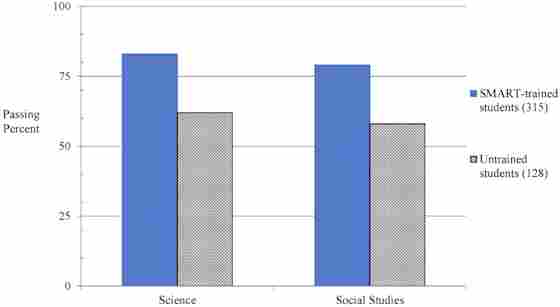Overview
Adolescence is an ideal time to train complex thinking skills given the brain development that occurs during this period, and middle schools should provide an ideal environment for it. Unfortunately, few teachers are equipped with enough knowledge of the science of learning and evidence-based methodology to help all their students develop their cognitive capacity to the fullest. Using our higher-order executive function training protocol (SMART™), we provided short-term, intensive professional development to teachers. We equipped them with a brain-based program and the confidence to close the learning gap as measured by academic performance. The results reveal teachers were able to:- Empower their students to take control (by exercising their executive function) and develop a sense of agency, thereby enhancing their personal learning abilities.
- Transform their teaching methods by moving from a fact-based teaching focus to an emphasis on engaging innovative thinking and deeper level (gist) reasoning.
- Celebrate their students’ improved learning and achievement across academic areas of reading, math, science and social studies, not just for gains in isolated course curriculum.
- Experience greater personal success by expediting students’ ability to thrive in the classroom.
- Eighth grade students who received SMART training from their teachers showed immediate benefits of deeper processing.
- Students who received SMART training also showed long-term academic benefits through improved STAAR scores – better than their untrained peers and better than the state average.
- The higher scores among the SMART trained students showed that boys and girls improved equally, and there were no significant differences based on who their teacher was.

Figure 3. Passing rates for eighth graders are shown for trained and untrained groups on the STAAR Science and Social Studies tests after training. On both tests, the trained group outperformed the untrained group.






